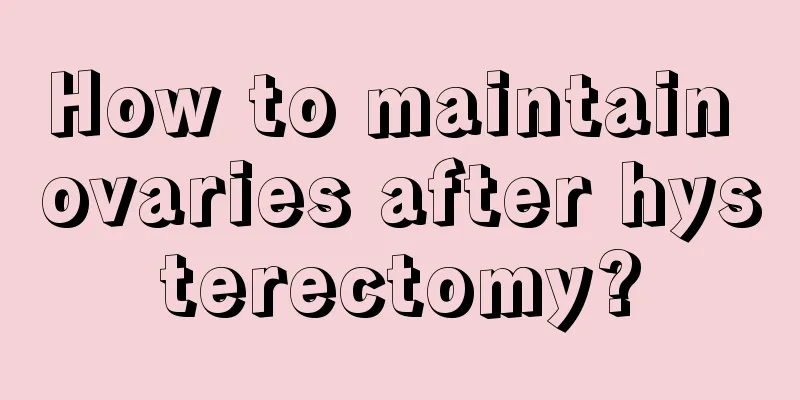Can uterine polyps be treated without surgery?

|
Uterine polyps, also known as cervical polyps, are a common symptom of chronic cervicitis. They are mainly caused by chronic inflammation that stimulates the mucosal tissue and causes hyperplasia. And the hyperplasia will gradually form protrusions and finally form polyps. Whether polyps require surgery depends on the size, location, and shape of the polyps. Age is also an important factor. When a vaginal speculum is used to expose the cervix during a routine gynecological examination, the polyps seen vary in size and shape and can be roughly divided into two types: The first type of cervical polyp has its roots attached to the external os of the cervix or inside the endocervical canal. They are generally small in size, with a diameter of less than 1 cm, single or multiple, bright red in color, soft in texture, easy to bleed, and with a slender pedicle. The appearance is like a water drop forming an oblate body. Another type of cervical polyp occurs in the cervical vaginal part. This type of polyp is superficial, protrudes to the surface, has a wide base, is light red in color, and has a tough texture. Most uterine polyps are benign, but a very small number of them become malignant, with a malignancy rate of 0.2 to 0.4%. If cervical polyps are removed, they often recur. Different treatments are used depending on the size, location, shape of the polyps and the age of the patient. 1. For larger polyps with peduncles, they can be seen or felt in the lower part of the uterus. At this time, the polyps can be removed by dilating the cervix, and then cervical and uterine curettage can be performed to scrape out the remaining polyps and send them for pathological examination. 2. When performing curettage on small focal or diffuse polyps, attention should be paid to comprehensive scraping, especially on the fundus and uterine angles. 3. Anti-infection treatment should be carried out after intrauterine surgery. Antibiotics can be given orally or intravenously in clinical practice. 4. For patients with obvious bleeding symptoms that cannot be eradicated by the above treatment methods or that often recur, hysterectomy should be considered. Whether or not the polyp needs to be removed depends on its size. If the polyp is too large and protrudes into the uterine cavity, it will cause pressure on the fetus and affect its development if you are pregnant. If it is very small, it can be left untreated. |
>>: What to do if you have a uterine scar pregnancy
Recommend
Does sex hurt women?
Sexual intercourse is a good thing, which can pro...
What is the health regimen for a 45-year-old woman?
Whether men or women, their health will decline w...
What are the white spots on nipples?
Breasts are something women are proud of because ...
Will there be any reaction on the seventh day of pregnancy?
There will be no reaction during the 7th day of p...
Can I get pregnant during the suppository period?
Suppositories are a common method for treating gy...
How to get pregnant easily
Couples who are preparing for pregnancy are undou...
People with uremia and kidney disease should not take a bath casually. Please pay attention to these six points!
For patients with uremia, taking a bath is not a ...
How to repair the pelvic floor muscles after childbirth?
Recently, many mothers are troubled, thinking abo...
Normal blood pressure range for different ages. Check if your blood pressure is normal?
Blood pressure is different in different age grou...
What kind of porridge is good for your period?
Women's bodies are very weak during their per...
Can I use acupuncture on my cervical spine during menstruation?
In our lives, many women feel abdominal pain duri...
"Nezha 2" - "Flu Storm"! See how the immune army staged a battle to protect the body
Prologue: The magic pill awakens? No, it's a ...
Causes of pelvic and abdominal effusion
Pelvic and abdominal effusion is a very common fe...
How to quickly enlarge breasts after weaning? This is the trick!
I believe that breast shrinkage is unbearable for...









